How Dry I Am
“How dry I am… ” These lyrics, written by a group called the Skillet Lickers in 1927 really! seem to be the tune a lot of gardeners in the United States sang this summer. Devastating droughts across the Southeast, California and even parts of England have placed some nursery people in a state of panic. Watering bans are becoming commonplace, and brown lawns, once thought unthinkable, are being accepted as the norm.
What’s a green industry professional to do? Educate yourself and the public. In this vast world of ours, we are blessed by thousands of plants from many regions that suffer crippling droughts and somehow survive. I have been in the Ramon Crater in Israel, where they talk about what year it last rained, yet I saw Acacia trees thrive! There is hope.
Drought Tolerance Explained
It is helpful to cover terminology used in describing these plants:
- Drought tolerant: able to survive extended periods without rain
- Xeric: able to survive incredible heat and drought (think desert and mountain plants)
- Xeriscaping: selecting and placing plants by their similar water needs
- Summer dormant: plants that drop all foliage and go summer dormant (most bulbous plants fall under this category)
Drought tolerant. Drought tolerance varies widely among plants, but generally it means a plant could survive a four to six weeks without irrigation. It is critical with these plants that they are established for a good period before they are hit with the stress of no water.
Plants have different mechanisms to tolerate these periods.
Leaves can be succulent (water storing), silvered or waxy (preventing loss of moisture), or very fine (having the smallest surfaces to prevent desiccation). Root systems of many plants also have water-storing devices. Those who have knocked a yucca, agapanthus or liriope out of a pot can see these storage devices clearly. Other perennials store moisture in their crown or fleshy roots and can sacrifice all upper parts in extreme conditions to come back when rains return. Many Mediterranean plants like rosemary, sage and oregano have large concentrations of oils in their leaves (this is also the acacia’s secret), which help lessen water loss (and smell great!)
Xeric. All xeric plants are drought tolerant. They go further in their tolerance for extreme heat and months without rain. I was tickled when a landscape architect from Arizona spoke at our FarWest Show commenting that he came from the green lawns in the desert to see our “deserts” of bark-dusted landscapes in Oregon. But the desert Southwest is the place to see wonderful cacti and succulents against free-form adobe homes. There is a stigma attached to these plants, which is why so many Arizonans pine for green lawns; xeric plants look like the desert. Fortunately, there are a number of plants, such as agastache, that can soften the bold, architectural shapes of the cactus, agaves and yuccas that rule the Southwest landscapes. Plants like agastache bridge over to common garden use in the rest of the United States, but caution should be taken with any plants in this group to provide perfect drainage and less-than-rich soil, or the plants can self-destruct in a single season.
Xeriscaping. Xeriscaping does not only refer to xeric plants. It stresses plant knowledge applied to the grouping of plant materials to their moisture needs. It also implies no supplemental irrigation. Credit must be given to the Colorado Waterwise Council, which has an excellent website promoting waterwise usage in the landscape. Many native plants depend solely on what falls from the sky and make excellent choices. In Beth Chatto’s The Dry Garden, she tells the story of converting of a parking area into stunning planting that has never been irrigated and tolerates rainfall of 20 inches per year. This is the driest spot in England.
Summer dormant. Summer-dormant plants are actually a large group of plants, many based in the Mediterranean and South Africa. It’s surprising how many nursery people don’t realize that plants like cyclamen, tulips and daffodils are Mediterranean natives. Plants in this group have adapted to mild, wet winters and hot, dry summers. Bulbs and tough corms are the storage mechanisms that assure survival. There are some primroses (Primula kisoana and Primula sieboldii) and dicentra (Dicentra spectabilis ‘Gold Heart’) that are very showy from spring to early summer, when they quickly disappear to rest in powder-dry conditions only to emerge quickly with spring rains. Many spring ephemerals like trillium, sanguinaria (bloodroot) and erythronium provide a “flash in the pan” in spring and tolerate the dry summer conditions that follow.
The Plant Lists
I have researched many xeric and drought-tolerant plant lists and have come up with a crude but usable classification system. I have separated plants in the following categories:
- Desert: those plants tolerating desert heat and drought, need perfect drainage
- Grasses: only the varieties that have done well in drought conditions
- Prairie: drought tolerant and adaptable to many soils
- Mediterranean: those adapted to dry summers and wet winters, need perfect drainage
- Garden plants: mostly perennials that have low water needs. Desert
Plants in the desert category fall into the USDA zonal range of 5 through 10. Summer temperature tolerance is in the 90s and 100s for weeks at a time with no rain. Plants can adapt to soils that are generally well drained, but alkaline clay pockets (in the desert Southwest) can pose problems. Using large stones or boulders near plants offers some respite from the heat and keeps moisture in the ground a bit longer.
Yuccas are one of the most dramatic, architectural plants for the hot, dry site. Yucca ‘Bright Edge’ and ‘Color Guard’ offer interesting variegated leaves, while yucca ‘Sapphire Skies’ is a cool blue that forms a trunk in time, and it’s Zone 5 hardy!
Agastache like ‘Raspberry Summer’ and ‘Summer Love’ offer prolific raspberry- and rose-toned flowers with fragrant foliage. These plants do much to soften the hard architectural forms of many desert plants.
For something unusual, try Agave parryi, a succulent with blue leaves that is listed at Zone 4 in some sources. Even more bizarre (and cool!) is agave ‘Spot’, originally called Manfreda, this deciduous plant offers fleshy leaves with dark-purple spots.
Delospermas in a widening color range are commonly used in green roofs for their drought tolerance and ease of care. These can make a beautiful groundcover in problematic areas.
Grasses
Grasses listed in the group are tolerant of a wide variety of soil types but are not happy in clay. Too much water or fertilizer can stimulate floppy growth and poor flowering. Flowers are left on until the next spring (usually Feb. 15) when they can be cut back. Grasses are all about texture, movement and background color.
One of my favorites, Nassella tenuissima, is a diminutive, self-sowing grass with the finest “touch me” texture. Helictotrichon sempervirens sports nearly evergreen-blue foliage, while panicum ‘Dallas Blues’ offers steely blue foliage. Some panicums like ‘Shenandoah’ have gorgeous purple-red fall color and deserve a place in every garden. Little bluestems are getting increasingly popular, and Dick Lighty’s Schizachyrium scoparium ‘The Blues’ is one of the best. Muhlenbergia ‘Regal Mist’, for those in Zone 7, is a knockout with misty pink panicles that catch the morning and afternoon sun. The other plants mentioned are hardy in Zones 5-10.
Prairie
The prairie plants have a wide tolerance for rainfall, humidity and soil type. They are adapted for competition with their showy blooms. Asclepias tuberosa is a butterfly magnet as is echinacea ‘Merlot’, with its dark-purple sturdy stems and fragrant rose-pink flowers. New colors are emerging in echinacea, such as ‘Tiki Torch’ with large, dazzling, pumpkin-orange, fragrant flowers.
Baptisias do great in drought and offer a new range of colors as well as coreopsis the prairie tickseed. A few that stand out are coreopsis ‘Gold Nugget’ with striking golden flowers and deep-red eyes; coreopsis ‘Lightning Flash’, a 6-ft. tall form of Coreopsis tripteris with striking gold foliage; and coreopsis ‘Jethro Tull’, with wonderful gold, large spoon-leafed flowers.
Rudbeckia ‘Henry Eilers’ is great for the birds and bees with its unusual yellow quilled petals and brown button centers. Most prairie plants are quite hardy, comfortable in Zones 4-9.
Mediterranean
Mediterranean plants are, by nature, drought tolerant. Most are capable of withstanding dry summers and moist, mild winters. In U.S. gardens, they demand a fast-draining soil and do very well in sandier loams. Many have small, fragrant foliage, both adaptations to the climate they grow in. Herbs such as oregano, rosemary, thyme and lavender are essential in the “Medscape.”
Designers have a choice in a number of colors: Silver accents can be supplied by artemisia, Stachys byzantina ‘Silver Carpet’ and Perovskia atriplicifolia ‘Filigran’, a silver standard for dry gardens. Purple foliage can be provided by sage, Armeria maritima ‘Rubrifolia’ or the new euphorbia ‘Royal Velvet’ with velvety tinted foliage. Groundcovers like veronica ‘Aztec Gold’, thymus ‘Pink Chintz’ and sisyrinchium ‘Devon Skies’ offer a variety of textures and flower colors. Most of these plants need full sun and are hardy to Zones 5-9.
Garden Plants
We now come to our final section, that of “garden plants” that are drought tolerant. Here we have a group that not only tolerates the widest range of soil types but also carries wider latitudes of shade tolerance and sporadic watering. Dry shade is a common situation in urban environments. Thankfully, there are a number of plants that can survive and even bloom under these conditions. Try bergenia ‘Solar Flare’, a new colorfully variegated form with thick leaves and purple flowers. Hellebores are quite the rage today, and superior strains like the Brushstrokes series offer a wide range of colors and splashed markings.
Heuchera fits the scene with a wide range of colors and some new introductions like Heuchera villosa ‘Blood’, which gives them more heat and humidity tolerance. Here’s a small list of new varieties and their benefits:
- Heuchera ‘Cafe Ole’: ruffled, chocolatey foliage in a tight mound
- Heuchera ‘Georgia Peach’: a stunning Heuchera villosa hybrid with electric coral and silvered leaves
- Heuchera ‘Hollywood’: long-lasting spikes of red flowers over silvered foliage
- Heuchera ‘Obsidian’: shiny, ruffled, near-black foliage does not fade
- Heuchera ‘Peach Flambé’: bright-orange, ruffled foliage is a knockout in spring
- Heuchera ‘Rave On’: Allen Armitage considers this one of the best; silver leaves and hundreds of flowers, very heat and humidity tolerant
- Heuchera ‘Snowfire’: a form of Heuchera sanguinea, native to the deserts of Chihuahua, Mexico, and Arizona; carmine flowers over variegated foliage
- Heuchera ‘Southern Comfort’: huge velvety amber leaves up to 10 inches across
Many more options open up in the sun. Gaillardia ‘Oranges and Lemons’ represents a great genus with huge vivid flowers on mounding plants. Sedums are a necessity in the dry garden. Sedum ‘Cloud Walker’ is upright with a vase-shaped habit and a layered look when blooming, with blue leaves tinted purple. Sedum ‘Mr. Goodbud’ is a dusky new hybrid with tight foliage and strongly contrasting colors between its light buds and dark-mauve flowers.
Penstemons inhabit some impossibly difficult areas, exposed to extreme cold and equally extreme heat, all the better to offer in the garden. Penstemon ‘Dark Towers’ has dark-purple leaves in spring, nice purple flowers in summer and is well suited to the garden. For a little “wow” power, try Kniphofia uvaria ‘Hybrid Mix’, a great group of hybrid “pokers” that bloom from red to yellow. Scabiosa caucasica ‘Ultraviolet’ is a Zone 3 beauty with dark-purple blooms that make long-lasting cuts. Most of the mentioned plants are hardy in Zones 4-9.
As you can see from this article, there is a world of exciting plants to fill your drought-tolerant landscape. Your only limitation is your imagination. Stay dry.

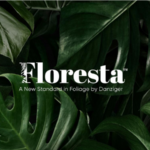
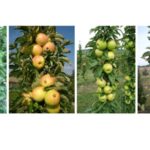
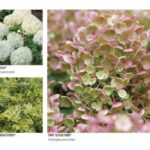

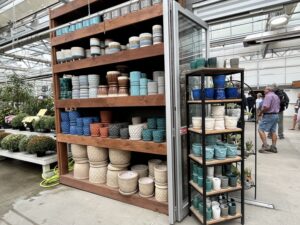
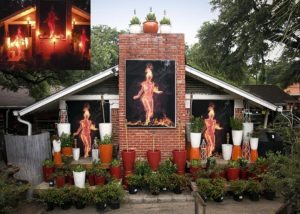
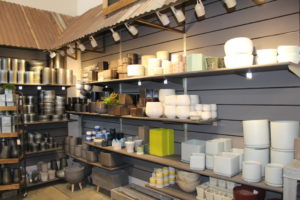
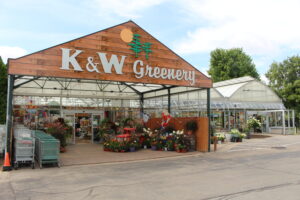
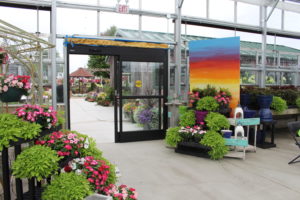

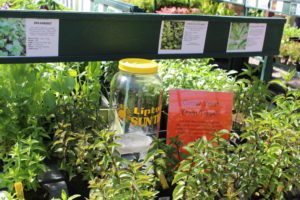
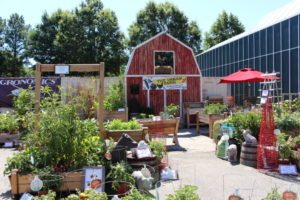
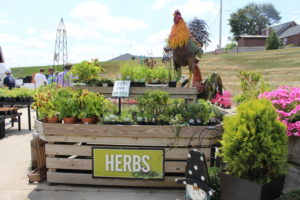



 Videos
Videos





